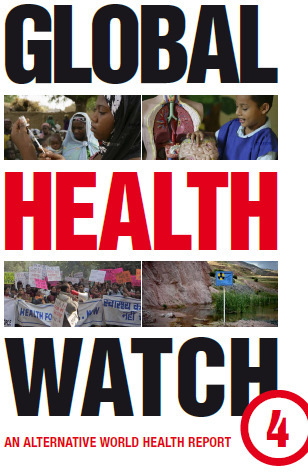6.2 Mental disorders: Global burden of mental disorders and the need for a comprehensive, coordinated response from health and social sectors at the country level
Secretariat Note
At the request of a Member State, a report (EB130/9) is presented on the current global situation with regard to mental health, outlining the main challenges and priorities in this area and the possible approaches to meeting them. The Board’s further guidance is requested.
The report summarises the magnitude of the global health problem presented by mental health. It refers to the GBD associated with MH diagnoses; the mortality risk including the risk of suicide; the particular risks associated with humanitarian emergencies; the inequalities in access to services; the social impact of mental illness (including homelessness, unemployment, reduced productivity, human rights violations, poverty).
The report refers to WHO's Mental Health Atlas which concludes that:
- Resources to treat and prevent mental disorders remain insufficient.
- Globally, spending on mental health is less than two US dollars per person, per year and less than 25 cents in low income countries.
- Almost half of the world's population lives in a country where, on average, there is one psychiatrist or less to serve 200,000 people.
- Resources for mental health are inequitably distributed.
- Only 36% of people living in low income countries are covered by mental health legislation. In contrast, the corresponding rate for high income countries is 92%. Dedicated mental health legislation can help to legally reinforce the goals of policies and plans in line with international human rights and practice standards.
- Outpatient mental health facilities are 58 times more prevalent in high income compared with low income countries.
- User / consumer organizations are present in 83% of high income countries in comparison to 49% of low income countries.
- Resources for mental health are inefficiently utilised.
- Globally, 63% of psychiatric beds are located in mental hospitals, and 67% of mental health spending is directed towards these institutions.
- Institutional care for mental disorders may be slowly decreasing world wide.
- Though resources remain concentrated in mental hospitals, a modest decrease in mental hospital beds was found from 2005 to 2011 at the global level and in almost every income and regional group
The report then summarises WHO's advice to member states regarding Mental Health and summarises the activities of the Secretariat in this field including the Mental Health Gap Action Program which encompasses advocacy, information and surveillance, policy law and human rights, service development and humanitarian emergencies.
The Board is invited to note the report and provide further guidance.
Watchers' notes of EB discussion
Global burden of mental disorders and the need for a comprehensive, coordinated response from health and social sectors at the country level (EB document 130/9) “There is no health without mental health: this is a fact”. This statement made by Seychelles summarizes very well the mood of the delegates during the discussion on EB document 130/9 “Global burden of mental disorders and the need for a comprehensive, coordinated response from health and social sectors at the country level”. Indeed, every countries recognized the magnitude of the global health problem presented by mental health.
India was the first country to take the floor asking for adding this item to the next World Health Assembly (WHA) agenda and presenting a draft resolution cosponsored by US and Switzerland. Recognizing that mental health is the result of factors mainly outside the health system, Norway stated that providing only pharmaceutical products would never be sufficient, thus a collaboration between health and social services is strongly needed.
This perspective was reinforced also by some Latin American countries such as Mexico and Brazil who went further and asked for adopting a Primary Health Care approach through a shift from hospital to community-based services and a better coordination with the social, educational and occupational sectors.
Some Member States raised the issue of human rights, their violation and the stigmatization of patients with mental health illnesses while others pointed out the importance of addressing this problem in children and adolescent as well as in aging people. African countries regretted that mental health had been neglected for a long time because of the importance given to physical illnesses and, at the same time, complained about the tremendous lack of adequately trained human resources.
Another point that deserves to be mentioned is the US proposal for changing the wording in the Secretariat report and replace “mental health” with “mental, neurological and substance abuse disorders”. This rewording might entail the risk for mental health and neurological disorders to be put on the same footing, thus applying similar preventive and curative approaches to such different problems. This issue was further discussed during the debate on the draft resolution after the Libyan request to apply the US proposed wording also to the resolution thus changing the scope of the all document. No agreement was reached on this topic so the Secretariat proposed to revise the text and present an updated version the following day.
Finally, three civil society organizations took the floor and, among their proposals, two can be considered particularly relevant: conducting an independent civil society assessment (including consumers) of the progress in the achievement of the action plan and making psychiatric hospitals more human and community-oriented.
Acknowledging the broad perspective provided by Member States comments, the discussion was completely silent with respect to the increasing medicalisation of mental health which is having worldwide several negative consequences such as a change in the public conceptions of mental illness, an increasing individualisation of social problems and a progressive dislocation of responsibility for social problems.
Pre-EB PHM Comment
For a more broadly based background see the topic page on mental health and in particular the PHM comment.
The report (EB13/9) is good in parts; but in parts a bit disappointing. It reflects a medical / psychiatric perspective with a focus on treatment and little attention to the longer term rehabilitation and community support functions. It is completely silent with respect to the social determinants of mental health; no reference to war, refugees, social inequalities or family violence.
WHO has a role in terms of providing guidelines to national ministries and it is fulfilling this role fairly well. However, in terms of the development assistance going to strengthening health systems so that they are able to reach out to support people living with mental illness the contrast with communicable disease is depressing.
The current and proposed funding arrangements (a 'funding dialogue') does not promise significant new funding for health systems strengthening and for more coherent assistance from the disease-specific donors.
PHM Comments at EB 130th
PHM has the following three points to highlight in response to the document EB 130/9:
-
The need for a broader perspective
The first chapter of the document summarises the magnitude of the global health problem presented by mental health; however, it is silent with respect to the social determinants of mental health. As other non-communicable diseases (NCDs), mental health is influenced by socio-economic inequalities. Indeed, the propensity for mental disorders reflects the interation between genes and environment although the relative roles of these two factors differ across different situation.
-
Separation between medical and social sector
The report substantially reflects a medical, specifically a psychiatric, perspective with a focus on medical treatment of mental disorders and little attention is paid to the longer term rehabilitation and community support functions. The separation of psychiatric and social services could represent a huge risk in terms of policy making and could deeply undermine the effectiveness of mental health programmes. A comprehensive primary health care approach is therefore fundamental for people living with mental illnesses.
-
The increasing medicalisation of mental health
The document is also completely silent with respect to the increasing medicalisation of mental health. Numerous researchers argue that the pharmaceutical industry is emerging as one of the major “engine” driving medicalisation if we consider for example the aggressive marketing of psychotherapeutic drugs, especially for depression. The medicalisation of mental illness is having several negative consequences: a change in the public conceptions of mental illness, an increasing individualisation of social problems and a progressive dislocation of responsibility for social problems. This consequently creates a huge barrier to the development of social approaches to prevention and treatment of mental disorders.




